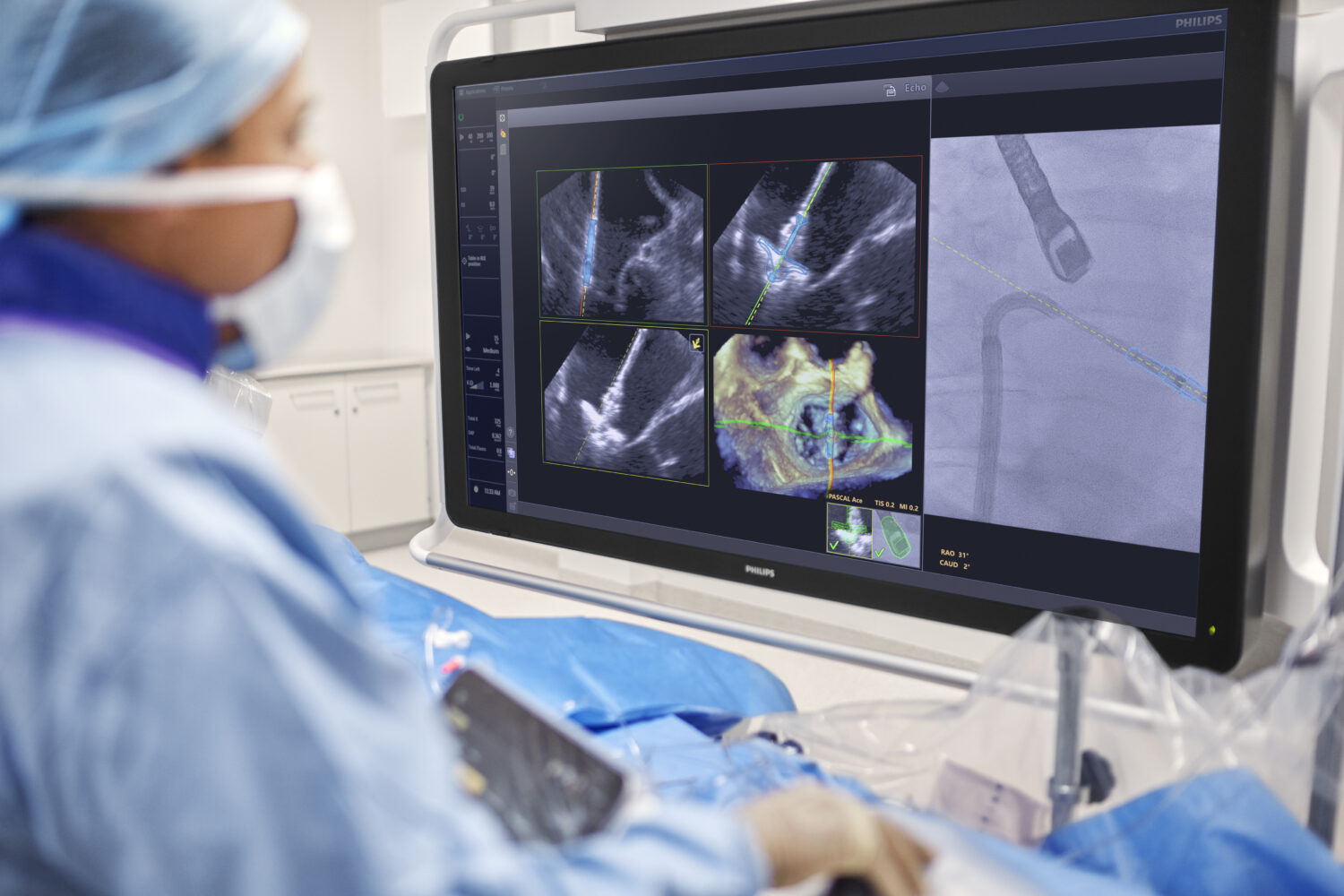
What You Should Know:
What You Should Know:
– Philips, a global leader in health technology, today launched DeviceGuide, a new AI-powered software solution. The technology is designed to assist physicians during the highly complex procedures used to repair leaking heart valves, specifically through a minimally invasive approach.
– Built on Philips’ established EchoNavigator platform, DeviceGuide translates complex X-ray and ultrasound imaging into intuitive, real-time visual guidance. This clarity helps clinicians navigate the beating heart with greater confidence during procedures like mitral transcatheter edge-to-edge repair (M-TEER).
How AI Provides Real-Time 3D Navigation
Minimally invasive M-TEER procedures offer a vital treatment option for over 35 million adults worldwide suffering from mitral valve regurgitation, who may be too frail for open-heart surgery adults worldwide, For patients who are too frail for open-heart surgery, minimally invasive transcatheter repair techniques such as mitral transcatheter edge-to-edge repair (M-TEER) offer a vital treatment option].
The procedure requires intense accuracy and coordination, as physicians must interpret multiple imaging streams and make precise adjustments to position the repair device inside the beating heart.
DeviceGuide uses an AI algorithm to automatically track the tiny repair device as it moves. It intelligently combines live echo and X-ray images to create a virtual 3D model of the device, superimposed on the live images.
Dr. Atul Gupta, Chief Medical Officer, Diagnosis & Treatment at Philips, noted the significance: “With DeviceGuide, we’re bringing AI into the heart of the procedure room, and into the heart itself.”














